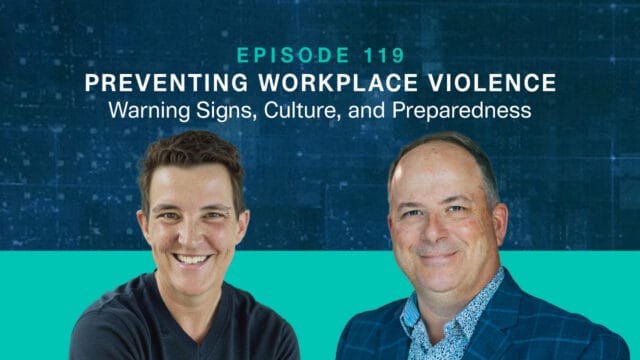
Top Tools for Conducting PHAs in Chemical Processing Plants

The chemical industry relies on Process Hazard Analyses (PHAs) to reduce risk and protect workers, communities, and the environment.
Chemical processing plants play a vital role in global supply chains. From pharmaceuticals to fuels and plastics, these facilities produce essential products that impact daily life. However, their operations involve complex systems and reactive materials that carry serious safety risks. High-profile industrial disasters, such as the Bhopal gas tragedy in 1984 and the Texas City Refinery explosion in 2005, highlight the importance of rigorous safety protocols and risk assessments.
PHAs are a cornerstone of modern chemical safety programs. A Process Hazard Analysis is a structured method used to identify potential hazards, assess their severity, and establish strategies to mitigate risk. Regulatory bodies like OSHA require PHAs under their Process Safety Management (PSM) standards, making them a legal and operational necessity.
Unlike a one-time inspection, PHAs must be performed regularly. They require the collaboration of engineers, operators, safety professionals, and leadership to assess processes from multiple perspectives. When conducted effectively, PHAs enhance communication, promote safety culture, and improve operational practices throughout the facility.
In this article, we’ll explore the most effective tools used for PHAs in chemical processing plants. We’ll break down their methodologies, advantages, and limitations, and provide actionable advice for optimizing PHA outcomes.
Why PHAs Matter in the Chemical Industry
PHAs are essential because they help prevent catastrophic failures. They identify weaknesses in systems before incidents occur and ensure that mitigation measures are both effective and up to date.
By leveraging both traditional techniques and modern technologies, companies can improve the consistency and reliability of their PHAs. Digital tools have made it easier to manage large datasets, collaborate remotely, and maintain regulatory compliance.
Ultimately, the effectiveness of a PHA program depends on using the right tools and maintaining a disciplined, team-driven approach to hazard analysis.
Common Tools Used for PHAs
Various PHA tools are available, each suited for different operational scenarios. Below is a detailed overview of the most widely used tools and techniques.
1. What-If Analysis
What-If Analysis is an informal, brainstorming-based technique that encourages team members to explore hypothetical failure scenarios.
Methodology:
- This tool involves organizing a meeting of experts and stakeholders from diverse fields, including engineering, operations, maintenance, and safety to discuss the process in detail.
- A facilitator guides the session, encouraging team members to propose hypothetical scenarios that could lead to safety incidents.
- The discussions often focus on deviations from normal operations, such as equipment failures, human errors, environmental factors, and procedural non-compliance.
- Responses to these questions are documented, and subsequent actions or safety measures are proposed to mitigate identified risks.
Advantages:
- The simplicity and flexibility of the What-If Analysis makes it accessible to teams with varying levels of experience.
- It is informal nature that encourages open discussion and creative thinking, which can uncover unique hazards that more structured methodologies may overlook.
- The technique can be quickly developed without extensive documentation or data, making it valuable during the initial stages of project development or when time is constrained.
Limitations:
- The subjective nature of the analysis can lead to varying interpretations of scenarios, potentially compromising thoroughness.
- The effectiveness of the analysis largely depends on the knowledge and experience of team members, which can result in inconsistent outcomes.
- Without a structured approach, some hazards may be underexplored, leading to incomplete assessments.
2. Hazard and Operability Study (HAZOP)
HAZOP is one of the most formal and structured tools for conducting PHAs. It’s ideal for analyzing complex systems with many interacting components.
Methodology:
- HAZOP involves a multidisciplinary team that systematically examines a process’ design and operational procedures.
- The study is structured around specific process nodes, such as major equipment or unit operations, while leveraging guide words (e.g., “more,” “less,” “as well as,” and “no”) to stimulate discussion about potential deviations from design intentions.
- For each deviation, the team assesses causes, consequences, and existing safeguards before recommending additional controls or modifications.
- An output from a HAZOP is usually a detailed report summarizing findings, proposed actions, and assigned responsibilities for further investigations or implementations.
Advantages:
- The systematic and thorough nature of HAZOP ensures comprehensive hazard identification, allowing for a deep dive into process intricacies.
- The structured framework enhances team collaboration and communication, as members share insights based on their expertise and experience.
- HAZOP also encourages proactive thinking about risk management, helping teams identify both hazards and operability concerns that could affect production efficiency.
Limitations:
- The HAZOP process can be resource-intensive, requiring considerable time and personnel commitment. Consequently, the logistics of scheduling participants can be challenging.
- The complexity of the analysis can overwhelm less experienced team members, potentially leading to missed hazards or misinterpretations.
- Producing extensive documentation may lead to inefficiencies if not managed properly, particularly when updates or reviews are needed.
3. Failure Modes and Effects Analysis (FMEA)
FMEA is a structured, tool used to identify how individual components might fail and what the consequences would be.
Methodology:
- FMEA begins by identifying all components, functions, or processes within the system being evaluated.
- For each component, the team identifies possible failure modes, their causes, and the effects of each failure on system performance or safety.
- The analysis employs a risk prioritization number (RPN) that combines three factors: severity (impact of the failure), occurrence (likelihood of the failure), and detection (likelihood of detecting the failure before occurrence.)
- By quantifying risks, FMEA aids organizations in prioritizing which failure modes to address first based on their RPN scores.
Advantages:
- The detailed-oriented approach of FMEA provides clarity regarding specific component interactions and risks, allowing targeted risk mitigation strategies to be developed.
- FMEA is particularly useful in design phases, where capturing potential failures and suggesting improvements can prevent costly redesigns or incidents later in the process.
- The quantitative nature of FMEA enables teams to make informed decisions regarding resource allocation for risk management efforts.
Limitations:
- The FMEA process can be time-consuming, particularly for complex systems with numerous components, as each possible failure mode must be carefully examined.
- Additionally, FMEA may not adequately address interdependencies among different system components, which can lead to oversights regarding how failure may impact the overall system.
- The effectiveness of FMEA relies heavily on the quality of the team’s input and completeness of data used in the analysis. Incomplete information may result in an inaccurate risk assessment.
4. Bow-Tie Analysis
Bow-Tie Analysis combines cause analysis and consequence modeling into a single visual tool. It illustrates how threats lead to a central event and what barriers exist to prevent or mitigate it.
Methodology:
- The Bow-Tie diagram represents a central event (typically an undesirable event, like a major chemical release) with branches illustrating potential causes (left side) and consequences (right side).
- For each cause, potential preventative measures or barriers are identified. Simultaneously, for each consequence, mitigative measures ae developed to reduce their impact.
- The resulting diagram thus offers a clear visual representation of the relationships between potential hazards, preventive measures, and emergency responses.
Advantages:
- Bow-Tie Analysis provides a clear and engaging visual format that effectively communicates complex safety information to various stakeholders, including management and non-technical personnel.
- The tool enables teams to identify gaps in risk management controls by clarifying existing safeguards and highlighting where additional measures may be necessary.
- The visual nature of Bow-Tie diagrams supports intuitive understanding and can be beneficial for training purposes, helping employees grasp safety concepts more readily.
Limitations:
- Creating a Bow-Tie diagram requires significant expertise and an in-depth understanding of both the process and the hazards involved. Inexperienced teams may struggle to capture all of the relevant factors.
- The tool’s effectiveness depends on the thoroughness of the preparations and discussions that precede diagram construction. Inadequate preparation may lead to an incomplete or misleading representation of hazards.
- While Bow-Tie Analysis elucidates the relationship between causes and consequences, it does not provide a detailed analysis of the probability of different failure modes, which may be necessary for complete risk assessments.
Best Practices for Optimizing PHAs
To ensure PHAs deliver maximum value, organizations should follow a few proven strategies:
- Integrated Approach: Employ a combination of PHA methodologies tailored to the specific needs of the process. For example, using HAZOP for detailed process analysis while applying What-If Analysis to assess broader operational scenarios can yield comprehensive results.
- Multi-disciplinary Teams: Involve a diverse range of experts in the PHA process, including engineers, operators, and safety professionals. This diversity fosters comprehensive discussions and insights, leading to more thorough hazard identification.
- Continuous Training: Ensure that team members are well-trained in PHA methodologies and tools. Regular workshops and training sessions can build expertise and improve the quality of analyses.
- Documentation and Follow-Up: Maintain meticulous records of all PHA processes. Implement follow-up actions based on findings from PHAs, tracking progress towards resolving identified hazards.
- Incorporate Lessons Learned: Use historical incident reports and lessons learned from past analyses to refine PHA processes. This approach encourages continuous improvement over time.
Conclusion
Conducting effective PHAs in chemical processing plants is essential to identifying and mitigating risks before they lead to serious consequences. Tools such as What-If Analysis, HAZOP, FMEA, and Bow-Tie Analysis provide a structured way to explore hazards and develop mitigation strategies.
Each tool has unique strengths and limitations. By selecting the right tool, or combination of tools, for each situation, organizations can improve both safety and efficiency. Today’s digital platforms further streamline the PHA process, ensuring better collaboration, documentation, and follow-through.
Ultimately, success in process safety depends on more than just tools. It requires trained personnel, strong leadership, continuous learning, and a culture where safety is a shared responsibility. When these elements align, PHAs become not only effective but transformative.
About the Author
James A. Junkin, MS, CSP, MSP, SMS, ASP, CSHO is the chief executive officer of Mariner-Gulf Consulting & Services, LLC and the chair of the Veriforce Strategic Advisory Board and the past chair of Professional Safety journal’s editorial review board. James is a member of the Advisory Board for the National Association of Safety Professionals (NASP). He is Columbia Southern University’s 2022 Safety Professional of the Year (Runner Up), a 2023 recipient of the National Association of Environmental Management’s (NAEM) 30 over 30 Award for excellence in the practice of occupational safety and health and sustainability, and the American Society of Safety Professionals (ASSP) 2024 Safety Professional of the Year for Training and Communications, and the recipient of the ASSP 2023-2024 Charles V. Culberson award. He is a much sought after master trainer, keynote speaker, podcaster of The Risk Matrix, and author of numerous articles concerning occupational safety and health.




